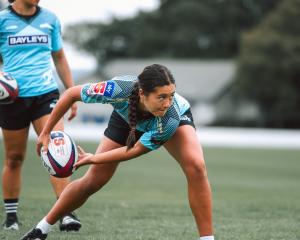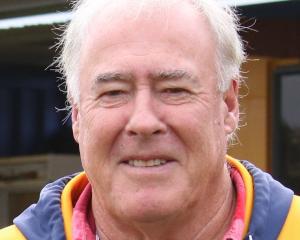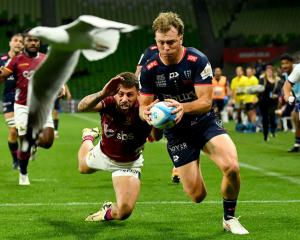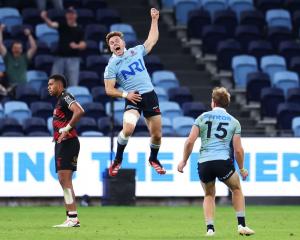Former All Black star Pita Alatini will never forget his 35th birthday. David Skipwith of the New Zealand Herald reports.
March 11, 2011 is etched in his mind as the day a routine rugby medical likely saved him from the magnitude 9.0 earthquake and giant tsunami that devastated the small Japanese coastal town of Kamaishi.
The worst natural disaster to hit Japan in decades claimed the lives of almost 1200 Kamaishi locals after the initial 10-metre-high wave swamped the breakwater designed to protect them, engulfing the town and surrounding areas.
Alatini, who played 17 tests for New Zealand (1999-2001), 16 for Otago (1999-2001) and 48 for the Highlanders (1998-2001), was captain of the second-division Kamaishi Seawaves, would have been caught in the thick of it while celebrating, if not for the inconvenience of an annual physical.
"I was at the hospital waiting to get my medical," said Alatini.
"I was there for a long time and it was my birthday and usually we'd go to lunch in town, so I was hoping to get in and out.
"Being really late saved me from being amongst it all where the tsunami happened.
"When it hit, I was back at our apartment with my family, so I was really lucky with the timing."
A rugby town
Kamaishi is a rugby town. It's also the birthplace of Japan's modern steel industry.
Situated on the Sanriku Coast, fishing remains the region's other big drawcard.
Under the banner of Nippon Steel, the town's original rugby team won seven consecutive titles between 1979-85, a streak that saw them dubbed Kita no Tetsujin 'iron men of the north'.
That unyielding reputation would be put to the test on Alatini's birthday, when the most powerful quake ever recorded in Japan struck offshore at 2:46pm.
The undersea megathrust launched a wall of water that arrived on Kamaishi's doorstep 35 minutes later.

"There wasn't too much damage around our apartment," he said.
"But when the Japanese people started running, we went to an evacuation assembly area.
"Within the hour we had [Seawaves] players that work in town come back and say 'the town is under water'."
Kamaishi's town centre had been completely flooded.
The raging water shunted everything in its path - ships, fishing boats, trucks, cars – around like Matchbox toys.
With a population of just under 38,000, estimates had 30 per cent of Kamaishi homes damaged or destroyed, and 60 per cent of businesses submerged in water.
In the wake of the disaster, the Seawaves clubrooms and playing field became a place of refuge.
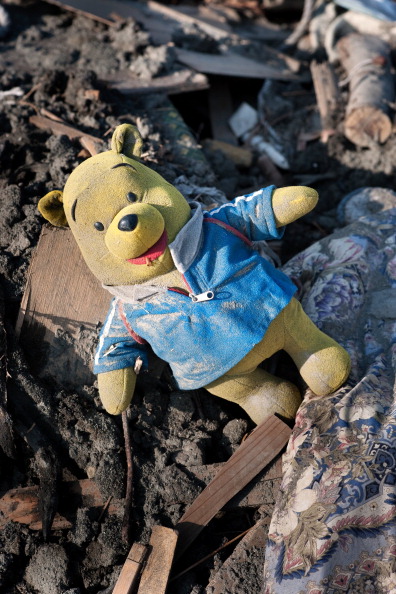
"We were all in shock throughout that first day," Alatini explained.
"The next day we started having to think around the space of survival, in terms of food and all of the families, planning what to do next.
"As long as we worked together in terms of rationing, to make sure the families and kids were getting looked after, we felt we had about a month's worth of supplies."
Alatini's Seawaves teammates all survived, but some club staff, their family and friends, were still missing.
The group eventually learned many of their loved ones had arrived safely at another assembly point, but some at the Seawaves base were already in mourning.
"A few old boys lost their parents right in town. We also had a girl missing that worked in the Seawaves office. She passed away.
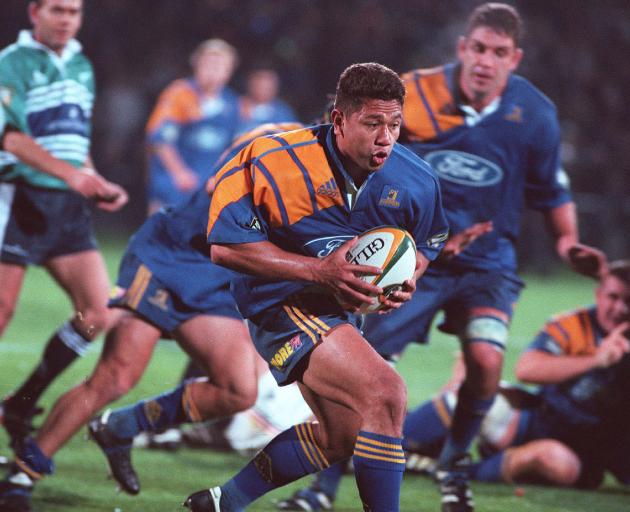
"We had to console her through that tough time. Her kids were lucky enough to survive but her parents didn't."
"We wanted to stay"
With supply lines cut off, the possibility of aftershocks, and the Fukushima Daiichi Nuclear Power Plant deteriorating, exiting Kamaishi seemed wise to anyone who had somewhere else to go.
Foreign embassy representatives arrived encouraging visitors to get out while they could.
Some didn't need to be told twice, but Alatini, and good mate, former Wallaby forward Scott Fardy, had other ideas.
"Scott was adamant he wanted to stay and I felt the same way," he said.
"We had a lot of good friends and there were a lot of good people that had helped us during our stay.
"We had homes in New Zealand and Australia, and in their time of need, we couldn't just up and leave.
"Just to be there for our mates and also their families and friends, was really important.
"We talk about rugby being a brotherhood and family, and having each other's backs, and that really came through with us. That's the beauty of rugby."
Sending his family home to New Zealand without him, was one of the toughest decisions Alatini has faced.
"At first they were like, 'no way - we all come back or we all stay'.
"The kids were sad but they understood, knowing they'd grown up there and it was their home. [Megan] knew too, that me staying was representing us as a family.
"It didn't really hit me until they all got in the van and left, and I was like 'oh, have I done the right thing?' But in my heart, I knew it was."
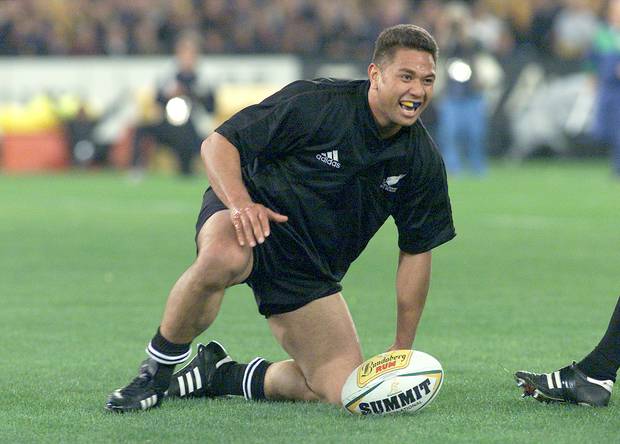
Over the next three weeks, Alatini and Fardy, together with Seawaves coach and fellow Kiwi Paul Hodder, and Tongan players Lata Lui and Piei Mafile'o, stayed in camp, preparing meals for those in need.
"Back home we'd all had big family feasts with hangi and umu and we knew how to serve a lot of people.
"Lata had started training to be a chef, so he directed us. We just kept to soups and added noodles."
Once the muddy waters had subsided, relief supplies began arriving in town.
Alatini's group volunteered their collective muscle to unload military trucks and walk 16 kilometre round-trips delivering goods to isolated communities.
"Once we saw the state of the town, we knew we were in a bit of strife, and there was going to be some much-needed work to get people back into normal life.
"Cars were still stacked on top of each other from where they had washed up but it was safe enough for us to get through.
"The hours were long and it was physical work but we were used to that, and that's where we had felt we could really be of help."
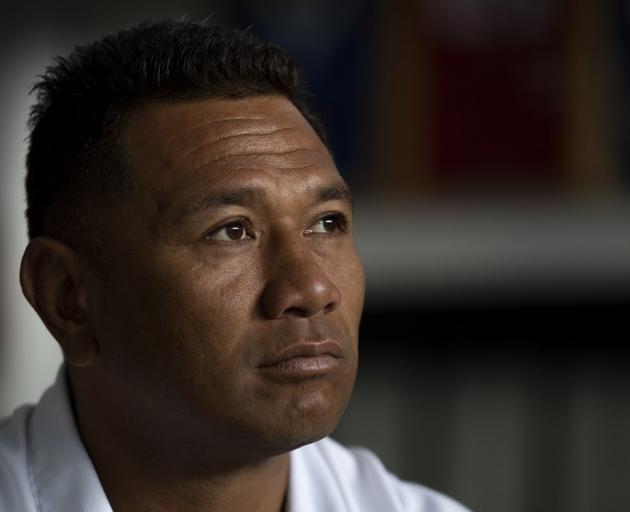
"Down but not out"
Less than a month after the tsunami and with basic infrastructure barely in place, a community meeting decided the rugby players needed to get back to doing what they do best.
The new rugby season was fast approaching and Kamaishi's 'iron men' were not about to forfeit.
"The message that came back to us that the town needs rugby to carry on. That's what they were pinning their hopes on.
"We were taken aback by that. That again, just shows how powerful rugby or sport, can be, as a vehicle to life."
After a brief visit to Auckland to reunite with family, Alatini and the Seawaves resumed training in Kamaishi, while the recovery effort continued around them.
"Our rugby field was still being used as an airfield by helicopters delivering supplies or taking people to hospital so the reality of what was still going on was right there.
"But we could feel the love of the people, and a big part of that was because of what the rugby club had done with us players being at the relief centre."
The whole experience and the resilience of the Kamaishi people, had a lasting impact on Alatini, now an assistant coach with Tonga, and Director of Rugby and backs coach with Auckland Premier club side Pakuranga.
"Sure [it changed me]. I've always known not to take life for granted but that really hit home.
"The townspeople were the main thing for me, to have those friendships and relationships, that stuck with me for a long time.
"Seeing them down but not out, thankful for life, was another thing. There was huge impact just in that.
"If was easy enough for us, to just get up and go, because we had a life and people outside of this. But for the locals, it was around how they were going to rebuild their lives.
"That was huge in terms of going forward after leaving the place."
Rising from the rubble
Kamaishi is set to win the hearts and minds of rugby followers during next year's World Cup in Japan.
Having barely recovered from the 2011 earthquake and tsunami, Kamaishi defied the odds in launching their successful bid to become the smallest of 12 Japanese venues to host matches at the global tournament.
The new Kamaishi Recovery Memorial Stadium opened in August and will be the venue for the Pool D clash between Fiji and Uruguay on September 25, and Namibia and Canada's Pool B game on October 13.
Both matches are already close to selling out, with 10,000 temporary seats being installed to increase the boutique ground's capacity to 16,000.
Former All Black midfielder and ex-Kamaishi Seawaves captain Pita Alatini was initially stunned to learn the town was entering a hosting bid, knowing the region's infrastructure required urgent and extensive repairs following the disaster.
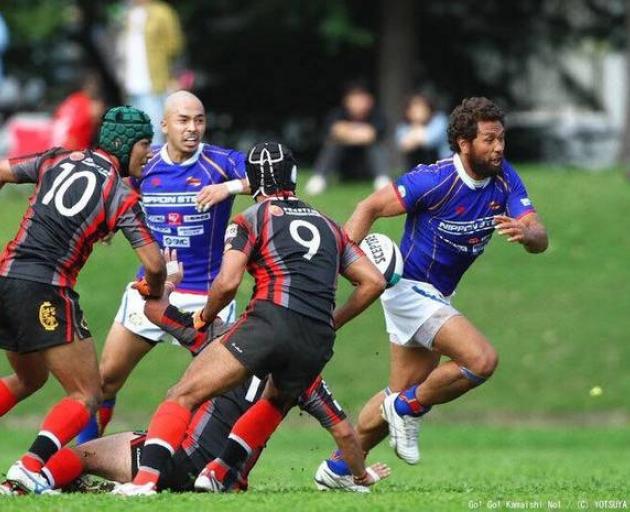
"I was shocked. It was hard to fathom that they wanted to build a stadium rather than get that money back in somewhere else into the community," said Alatini.
"But there wasn't much opposition to it. There were a few grumbles which is natural, but I would have expected a whole lot more.
"But that's just how special the game is to the people there. They felt that having a stadium for the World Cup was going to do a lot more good than not having it.
"It was just awesome and beautiful to see the people of our little town all hyped up for it. And with the stadium open and everything going ahead they're really looking forward to the World Cup."
The stadium occupies the former site of two schools that were relocated to higher ground following the tsunami.
Nestled at the foot of the mountains that surround Kamaishi, the Kasshigawa River and ocean complete the picturesque surrounds.
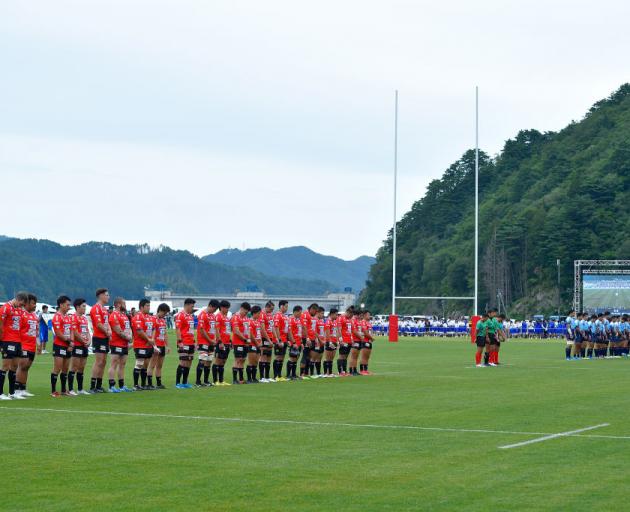
"I reminded the locals that we had some awesome times around their festivals and fireworks displays, and if they can bring that stuff and create that atmosphere around the World Cup, that will be a major drawcard for people to come," said Alatini.
"People will be interested in where the tsunami happened, but you want people to see and celebrate what the little towns are about, because Kamaishi and all along that coast, is really very different to mainstream Japan.
"It's a perfect time to really get the message out around their little town but also attract tourists back after the World Cup, to pop in for two or three days and have a little look, because there are so many cool little places for people to experience."

